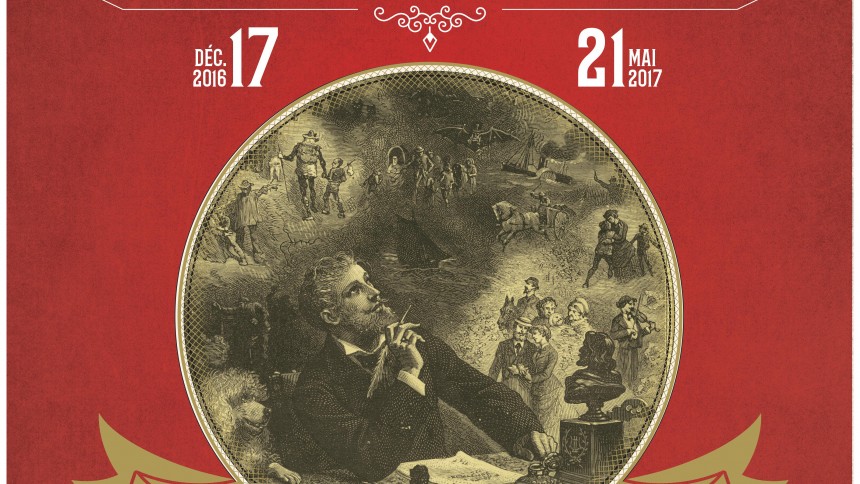
Fabrique des Savoirs, Elbeuf
FROM 17 DECEMBER 2016 TO 21 MAY 2017
Baccara: Elbeuf - Big industry, money and a passion for the game
This is a literary source of the highest importance when it comes to understanding the history of Elbeuf and its industry; Baccara (which translates as “Baccarat”) provides a vivid portrait of the town during the late nineteenth century and does not skirt around religious and economic issues that shook up society at the time, all whilst creating the complex portrait of a man who is driven by his duty.
This novel will be presented thanks to the exceptional loan of the manuscript held by the libraries of Rouen, as well as to the extensive documentation taken in particular from the Fabrique des Savoirs’ heritage archives. Visitors can interpret Malot’s work and vision through numerous works, graphic documents and paintings.
Complices: Oissel and Rouen - love and justice
Often considered to be one of the first detective novels in French literature, Complices (which translates as “Accomplices”), published in 1892, also offers readers a beautiful portrait of a woman, a cruel take on the local elites, and an ironic description of the way in which justice works. The loop of the Seine, the forest of Oissel and the town of Rouen play a key role in the novel, with their rendering playing an undeniable part in readers’ pleasure as they discover this astonishing work.
This novel will be presented in particular through the context within which the characters evolve, giving prominence to the descriptions of the loop of the Seine around which the drama unfolds.
Un curé de province: Bonsecours – Religion
Set in an imaginary town, Un curé de province (which translates as “A Provincial Priest”), published in 1872, gives a thinly veiled account of the construction of the basilica of Bonsecours, a huge neo-Gothic church overlooking the Seine near Rouen.
By presenting the dynamic priest/builder and telling the story of a construction site that is as spectacular as it is complicated, Malot provides a delicious depiction of religion in nineteenth-century Normandy through the eyes of this rather anticlerical novelist.
Still strongly embodied today in the landscape around Rouen, the story of the Curé de province provides a particularly vivid evocation of both the basilica’s construction site and its benefactors and pilgrimage through very different kinds of objects.
Souvenirs d’un blessé: Normandy – the war
In the novel Souvenirs d’un blessé (which translates as “Memories of a wounded man”), Malot’s story intersects with rich iconography and very concrete representations of the war of 1870, scenes of battles and disasters that had very harsh consequences for Normandy, highlighting the role of witness that the writer takes on.
More than a century after his death, Hector Malot’s works provide a valuable tool for understanding the region and, most importantly, a source of enjoyment and discovery for readers. The exhibition attempts to help visitors to rediscover the works of this novelist through these four novels – Baccara, Complices, Un curé de province and Souvenirs d’un blessé - each of which evoke Normandy in their own way.
Practical information :
Opening hours : from Tuesday to Sunday, from 2pm to 6pm
The museum is closed on Mondays, as well as on the following public holidays: 1 January, 1 May and 25 December
Price : 4 €
